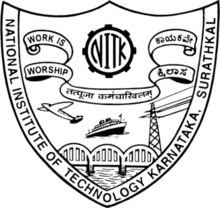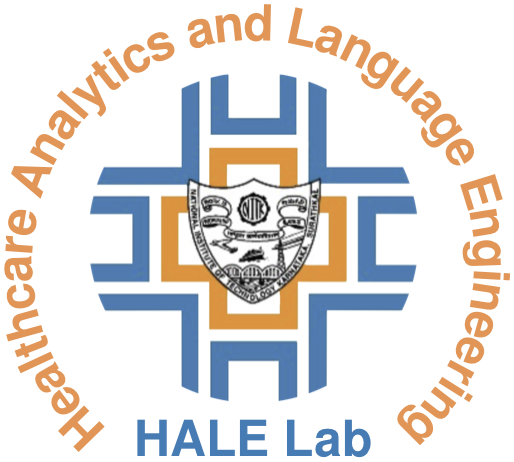Sponsored Projects
- Early Career Research Grant for "A Framework for Deep Learning based Analytics for Intelligent
Healthcare Applications"
Amount: 35 Lakhs.
Agency: SERB-DST, Govt. of India
Research Output - Google Cloud COVID-19 Research Grant
Amount: US $10,600
Grantee: Google Inc
Interesting Ongoing Projects
- Predictive Analytics based Integrated Framework for Intelligent Healthcare Applications
Healthcare analytics is a field that deals with the examination of underlying patterns in healthcare data in order to determine ways in which clinical care can be improved - in terms of patient care, hospital management and cost optimization. Towards this end, health information technology systems such as Clinical Decision Support Systems (CDSSs) have received extensive research attention over the years. A CDSS is designed to provide physicians and other health professionals assistance with clinical decision-making tasks, based on automated analysis of patient data and other knowledge sources. Recent advancements in Big Data and Healthcare Analytics have seen an emerging trend in the application of Artificial Intelligence techniques to healthcare data for supporting essential applications like disease prediction, mortality prediction, symptom analysis, epidemic prediction etc. Despite such major advantages offered by CDSSs, there are several issues that need to be overcome to achieve their full potential. There is scope for significant improvements in terms of patient data modeling strategies and prediction models, especially with respect to clinical data of unstructured nature. - Developing an Effective Framework for Medical Image Representation, Modeling and Management.
Diagnostic scanning is extensively used for investigation of internal organ related ailments and managing patient care. With the proliferation of imaging-based diagnostic procedures in healthcare, patient-specific scan images constitute huge volumes of data, thus creating a need for healthcare information management systems (HIMS) to facilitate their efficient organization and management, for supporting clinical decision support applications. Automatically making computers understand the content of an image and offering a quite reasonable description in natural language has gained more attentions. The caption prediction task in the medical domain is thus very relevant, which can be used to improve indexing mechanisms in HIMS. - Patient-specific predictive analytics using textual healthcare data
EHR based CDSS models fail to achieve acceptable accuracy for few of the clinical tasks like disease phenotyping, automatic code assignment etc . Through this project we aim to dsystems to enhance the existing deep learning models to improve the performance. - Clinical decision support system using imaging healthcare data
Through this project we aim to develop explainable CDSS using medical images from sources. - Clinical decision support system using heterogeneous healthcare data
Patient EHRs includes data from multiple sources e.g., demographic factors, lab test results, nursing notes, diagnostic images etc. Most of the existing literature makes use of single kind of data like structured EHR data or unstructured EHR textual data, or imaging data. Through this project we aim to develop CDSS that makes use of heterogeneous medical data. - Scalable End-to-End Deep Neural Network for Predicting Mortality Rate from Tweets
Predicting mortality rates from twitter data based on the psychological effects that reflects in the language of a user has been automated using recent advancements in text representation methods. Few researchers have already come up with a significant yet thought provoking conclusion that tweets alone would suffice to extract county level mortality rate of Atherosclerotic Heart Disease (AHD). With inclusion of contextual representation to these tweets, and cutting down the manual efforts, this proposed generic end-to-end Deep learning based methodology bearing semantic information could be extended to different languages, different diseases which have an effect to psychological elements and would also be less prone to human error. - Evidencing COVID-19 Trajectory for Auditing the Preventive Actions taken in India
Governments are taking massive efforts to control the COVID-19 outbreak. Specifically attempting to reduce the systematic commute by imposing the number of preventive actions and restrictions. Liberation in these actions and restrictions are inevitable and it's supposed to be audited to achieve the actual objectives. Evidencing the concept-drift in COVID-19 trajectory with respect to the already taken preventive actions will audit and assist the critical decision-making process. Here, concept-drift is evidenced by correlating the peoples’ mobility with the preventive actions which are collated in the form of time-sensitive events. This correlation could be replaced by the concrete measures through collating data from reliable sources like Arogya Setu Application. This approach uses publicly released location information from private organizations and COVID-19 statistics from the Ministry of Health and Welfare, India.

